Phil Verney: a view of the universe from Bow E3 [photoessay]
Phil Verney is a photographer who lives in Bow. He regularly takes photographs of the night sky from his flat, capturing the unlikely harmony between stars and the London skyline.
I’ve always had a keen interest in astronomy. I think it gives us a sense of our ultimate place in the universe, and can often be quite cathartic too to put things into perspective. In London, there isn’t that much you can see due to the extensive light pollution throughout the city, but there are certain features that are visible. The obvious one of course is the moon, but some constellations and planets are visible. Sure, it’s not quite the Roque de los Muchachos Observatory in the Canary Islands, but living in a city doesn’t prevent skygazing.
Using the skyline of the city can make for some interesting compositions, and for me, give the astronomical features in the images a little more context in terms of their size and distance, which are, as you might expect rather great!
Below is a selection of images I have taken over the past year in and around Tower Hamlets. So next time you notice the skies are clear, take a few moments to look up and see what you can see.
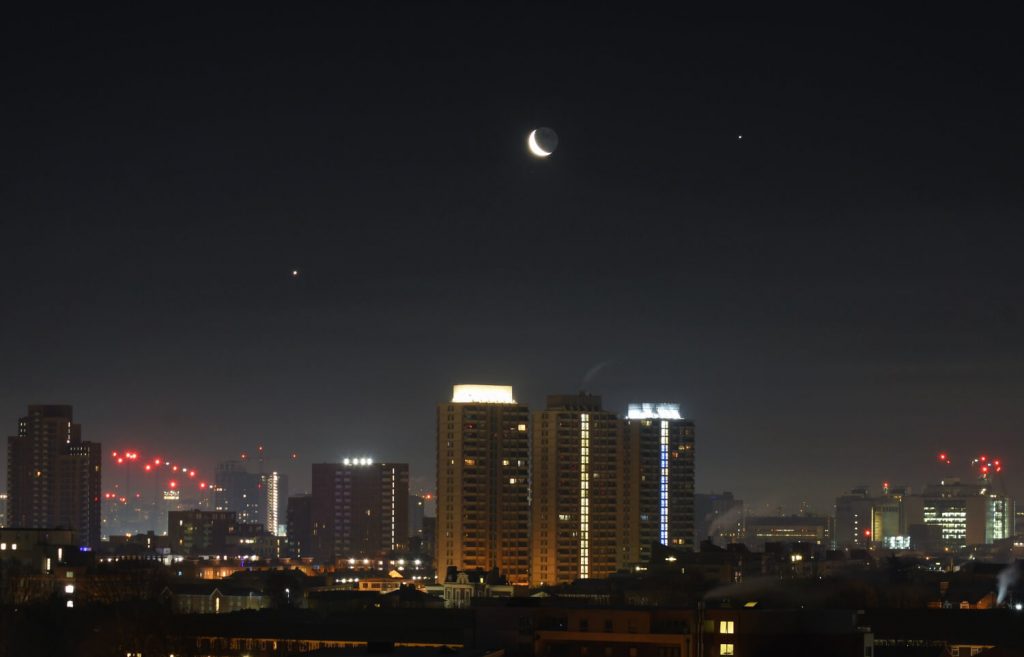
A beautiful conjunction on 31 January, 2019, showing (from left to right), Venus, the Moon and Jupiter. The three tower blocks below are the ones situated just south of Bow Church DLR station.
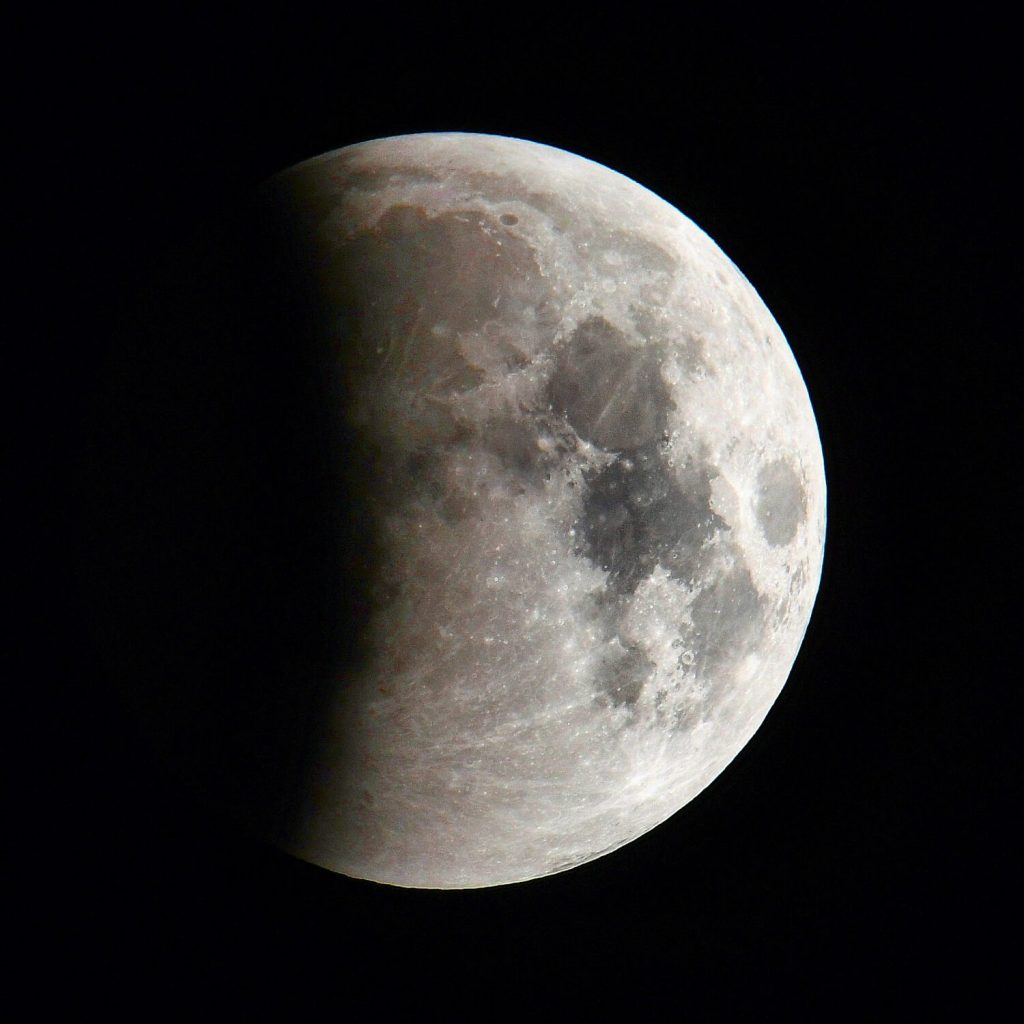
I’ve never seen a lunar eclipse before – not even a partial eclipse. I shot this image as the moon began to move into Earth’s shadow. It was quite something to see it happening so quickly. I had stayed up all night for this, so was very thankful to be able to get the shot off!
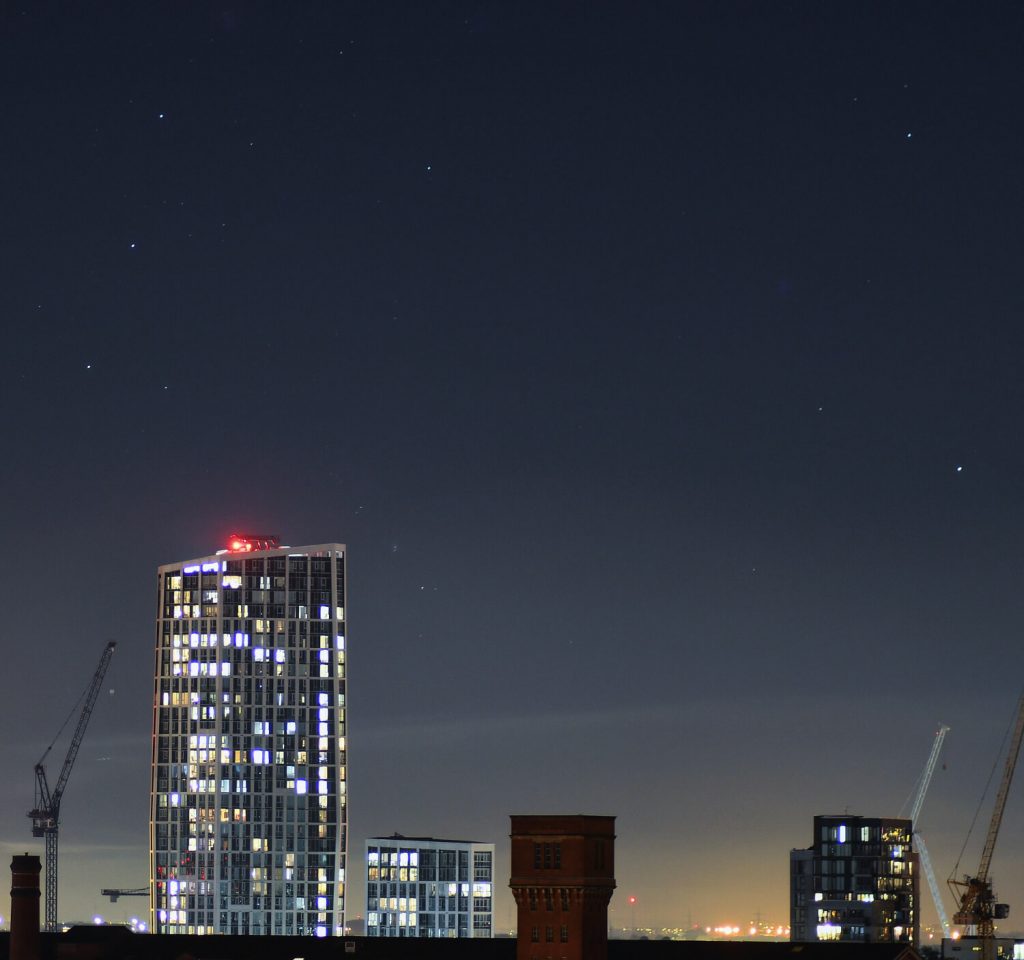
I love the way that astronomical objects interact with man made objects throughout the city. Whilst the light pollution presents great challenges, the opportunity to merge familiar objects that allow us to relate to distance is one I enjoy experimenting with. I shot this image of Orion rising above skyscrapers in East London.
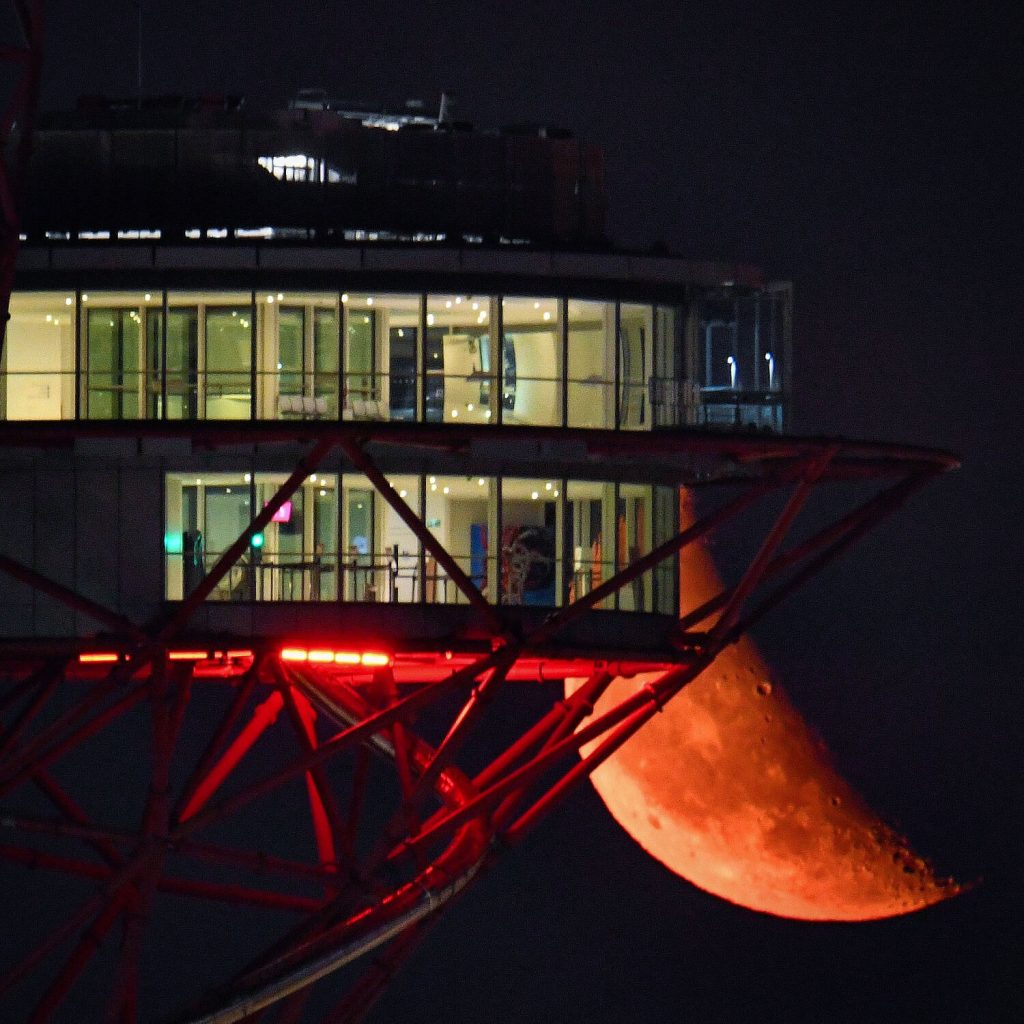
Aptly named “The (ArcelorMittal) Orbit”, this piece of architecture, installed for the London 2012 Olympics, is one of my favourite things to shoot during a moon rise as I think it interacts with it beautifully. I shot this image of the moon rising behind the Orbit and was happy with its framing.
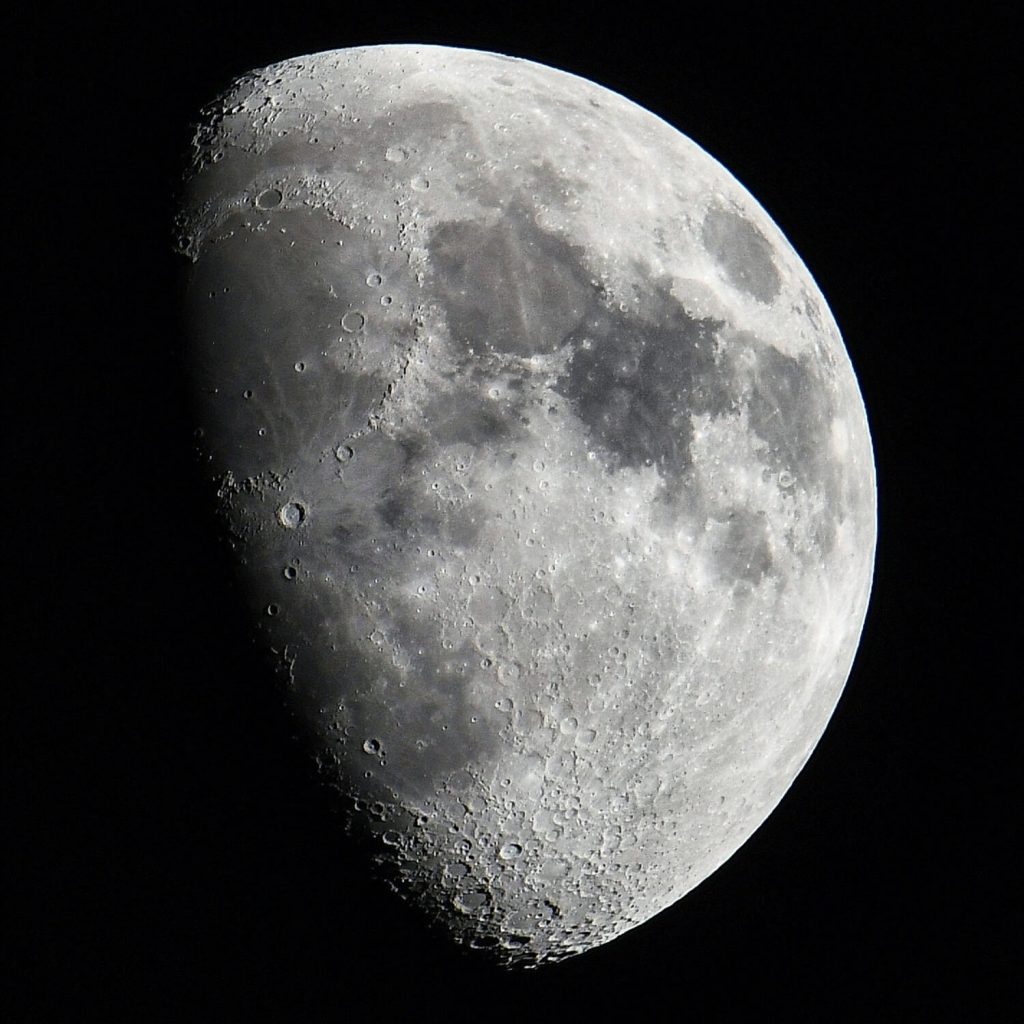
Our closest and most familiar neighbour, the moon. We all see it so often, and even in a major city it’s not really affected by light pollution, so it makes for a great subject to photograph.
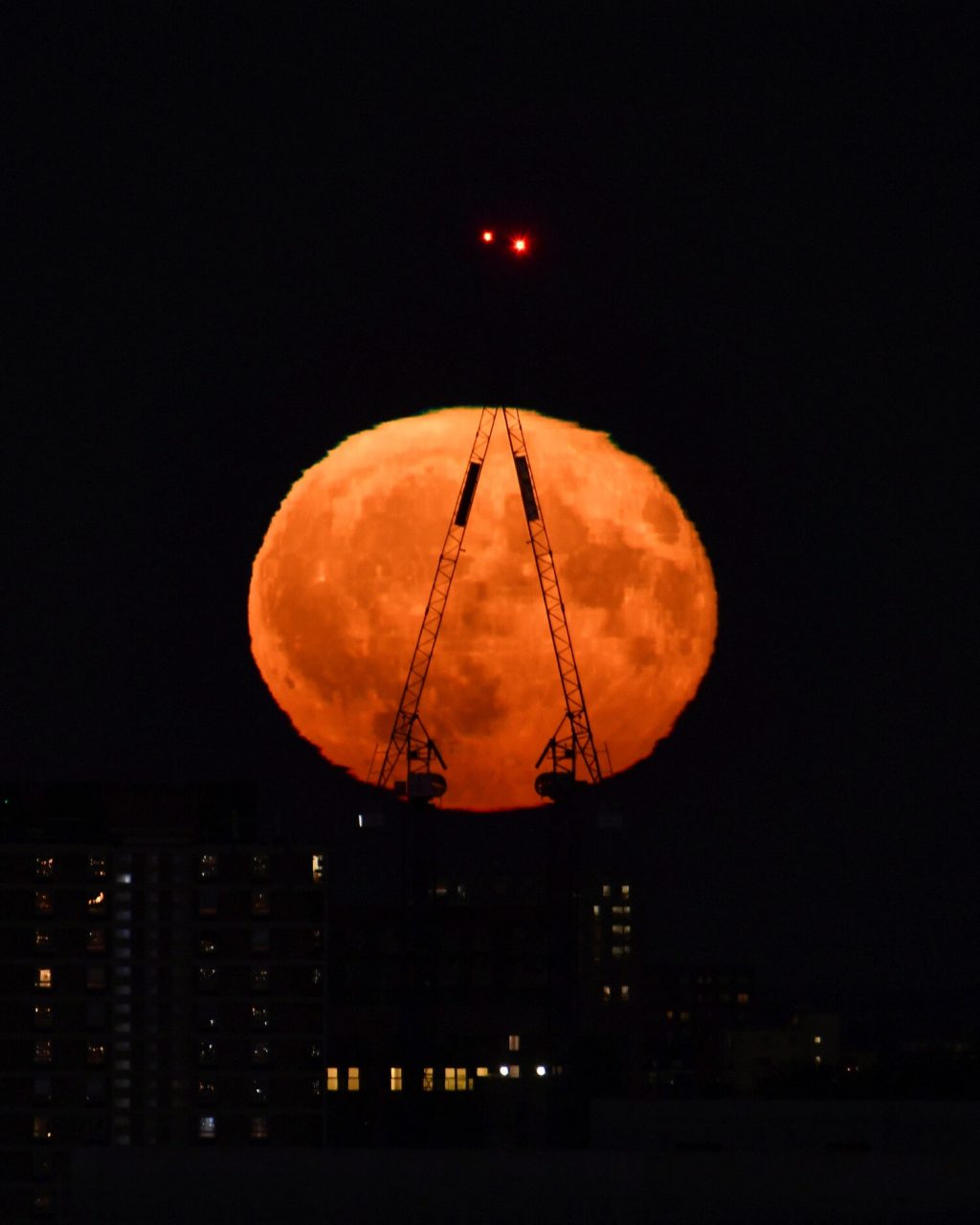
The East End of London has been undergoing huge regeneration since the London 2012 Olympics. There are cranes scattered all along the horizon. This was a case of right place, right time, and I noticed the moon rising behind two cranes that were perfectly crossed over one another.
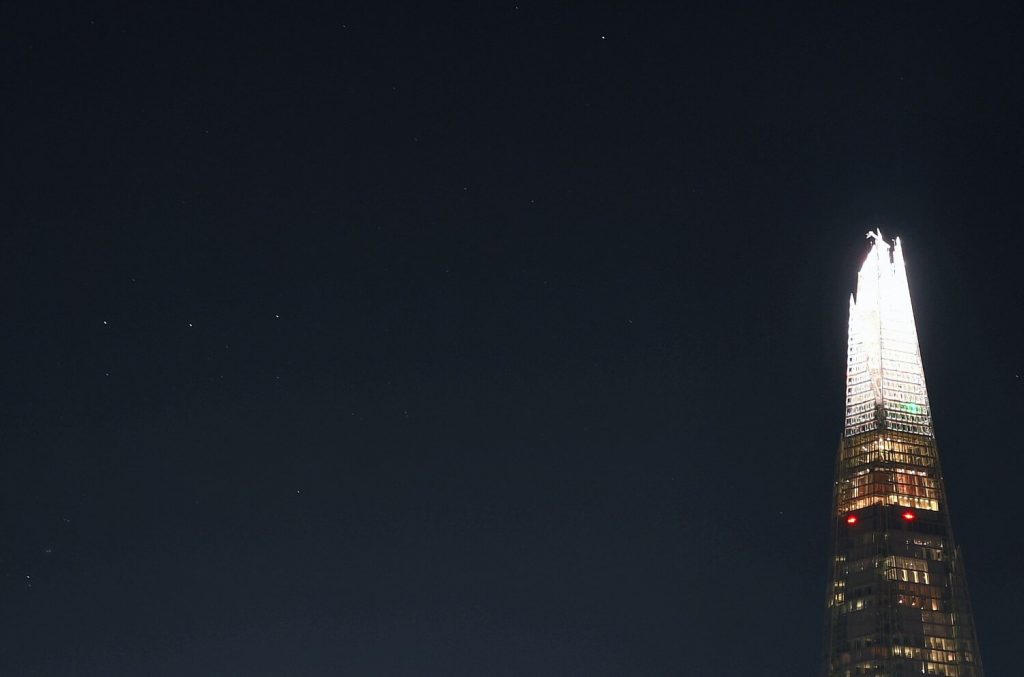
Here, you can see the top of the Shard – a familiar landmark to all Londoners, on the right, and on the far left three bright stars, which make up the belt of Orion. The middle one of these stars is in the region of 2000 light years away.
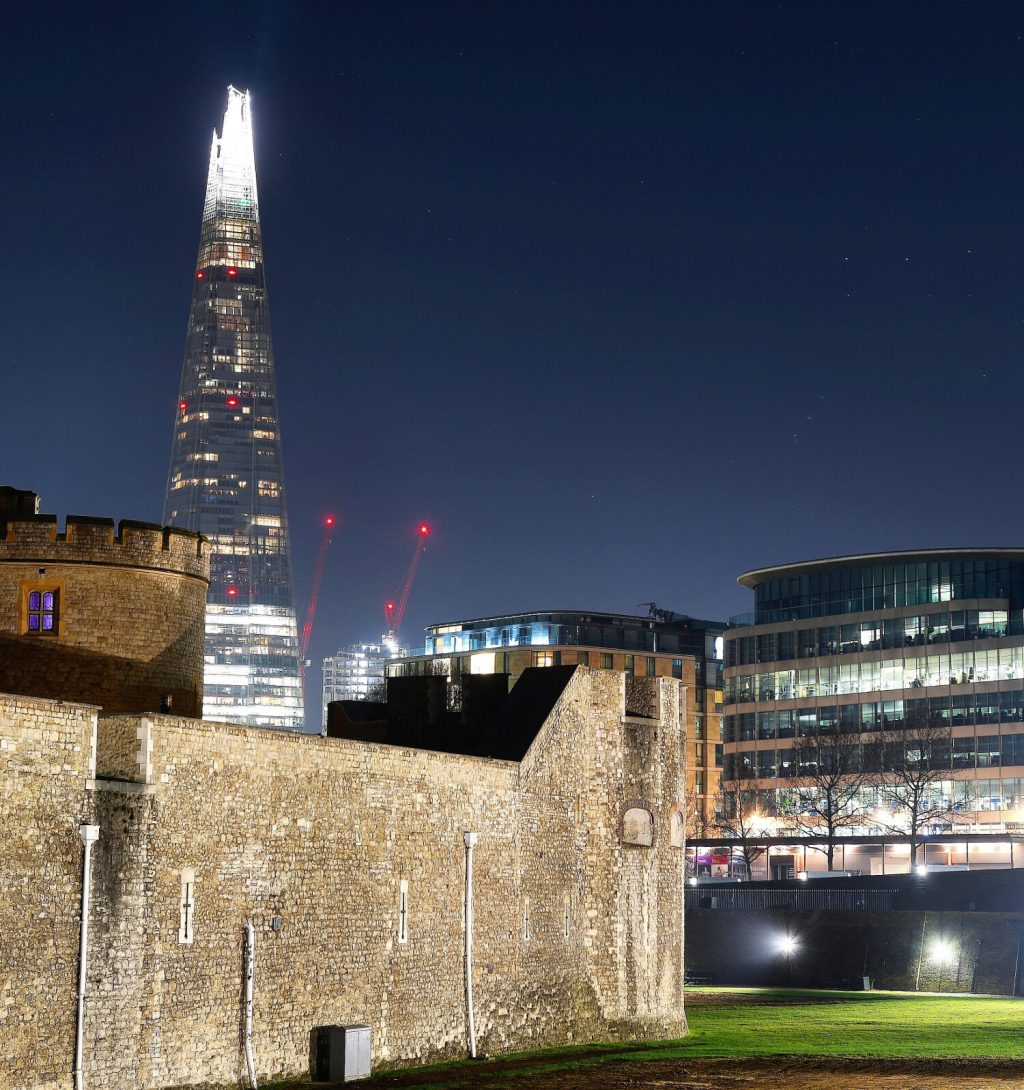
It’s all a matter of perspective. From left to right. Far left, Devereux Tower (Tower of London), dating back to 1238. Left centre, The Shard, dating back to 2012. Far right, the belt of Orion, the middle star, Alnilam being ~2000 light years away. Image taken on Tuesday 26 February, 2019.
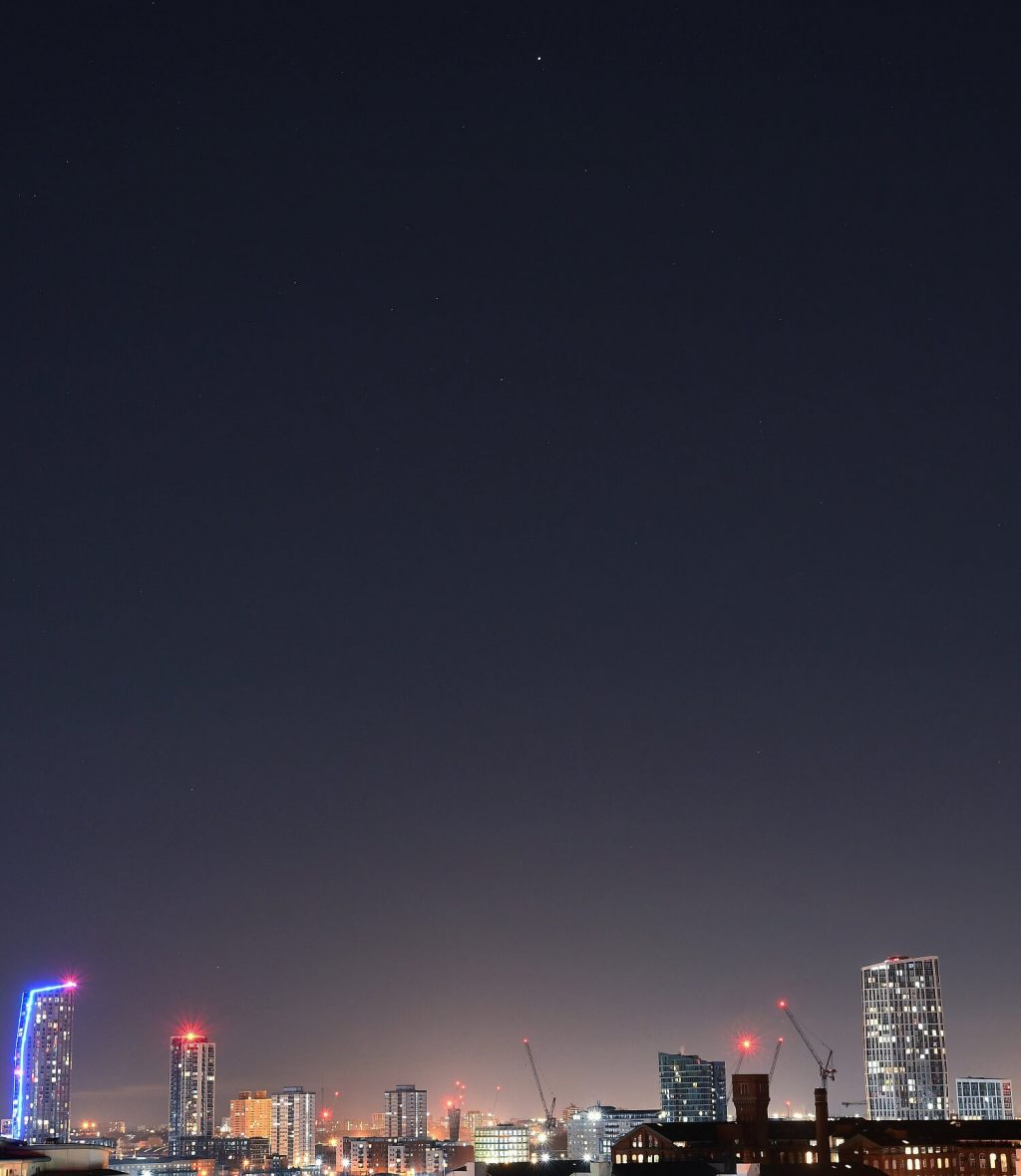
The bright star in the top centre of this image is called Arcturus in the constellation of Boötes. The cool thing for me is that Arcturus is some 36 light years away, meaning that although I shot this image the other night, the light from the star captured in the image was emitted around the same time I was born, as I’m 36 too.
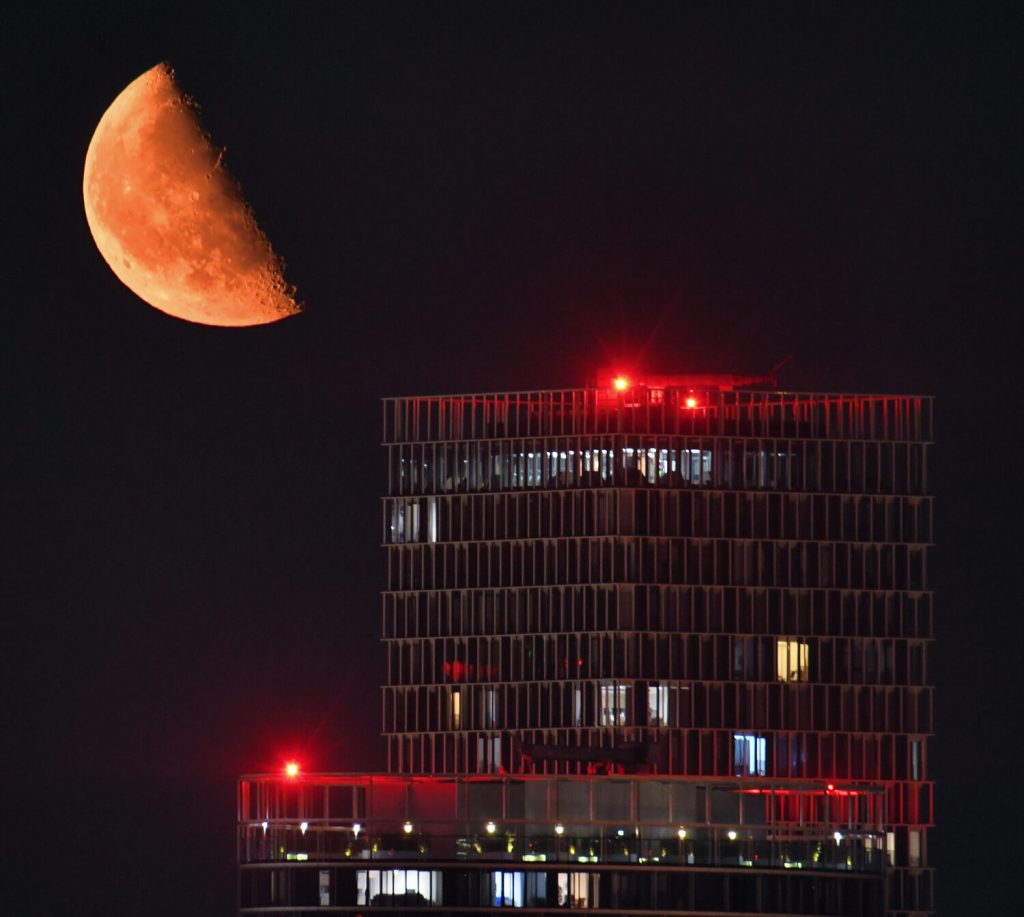
There are a lot of new skyscrapers that are either under construction, or have recently been completed around Stratford in East London. I shot this image of the moon interacting with the man made cityscape of new residential towers that have been finished.
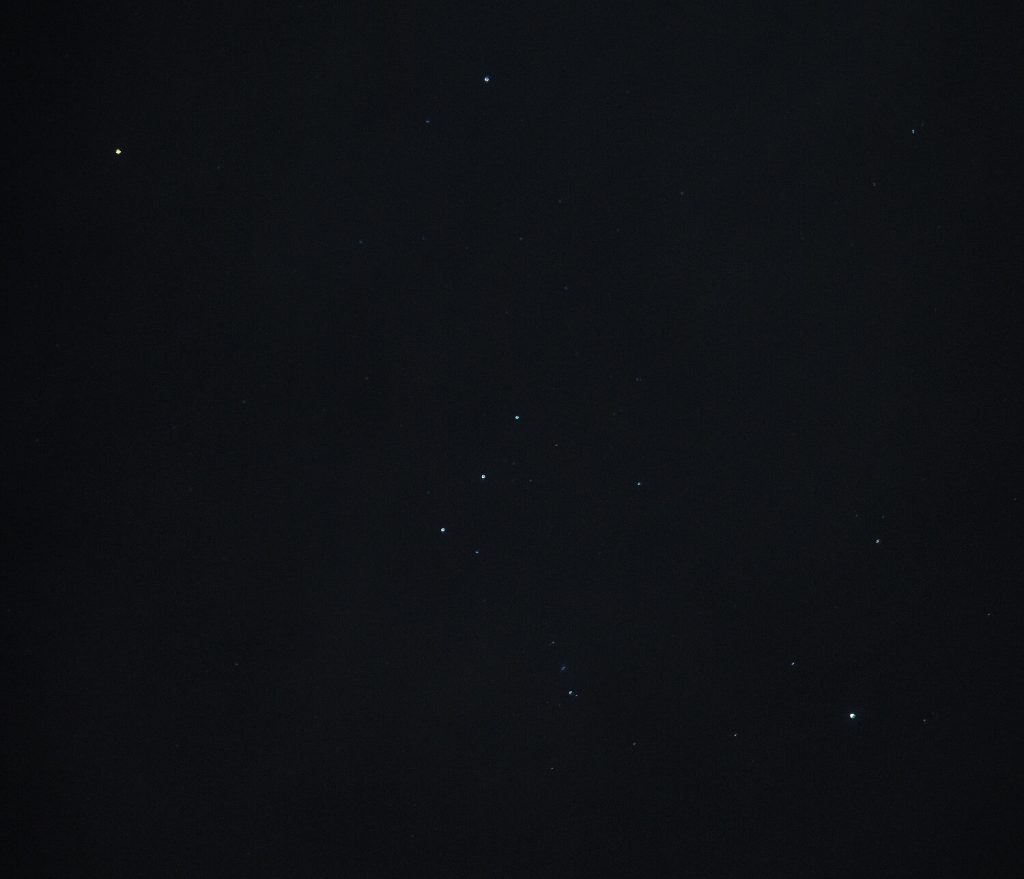
Throughout the autumn and winter, one of the easiest constellations to spot is Orion. It is very distinctive with its belt in the centre, framed by the funky named Betelgeuse (upper left), and Rigel (lower right).

London has some of the busiest airspace in the world, so I’m always on the lookout for some clear skies, a fullish moon, and the off chance that a plane on approach into one of the many airports around Greater London will pass in front of it!
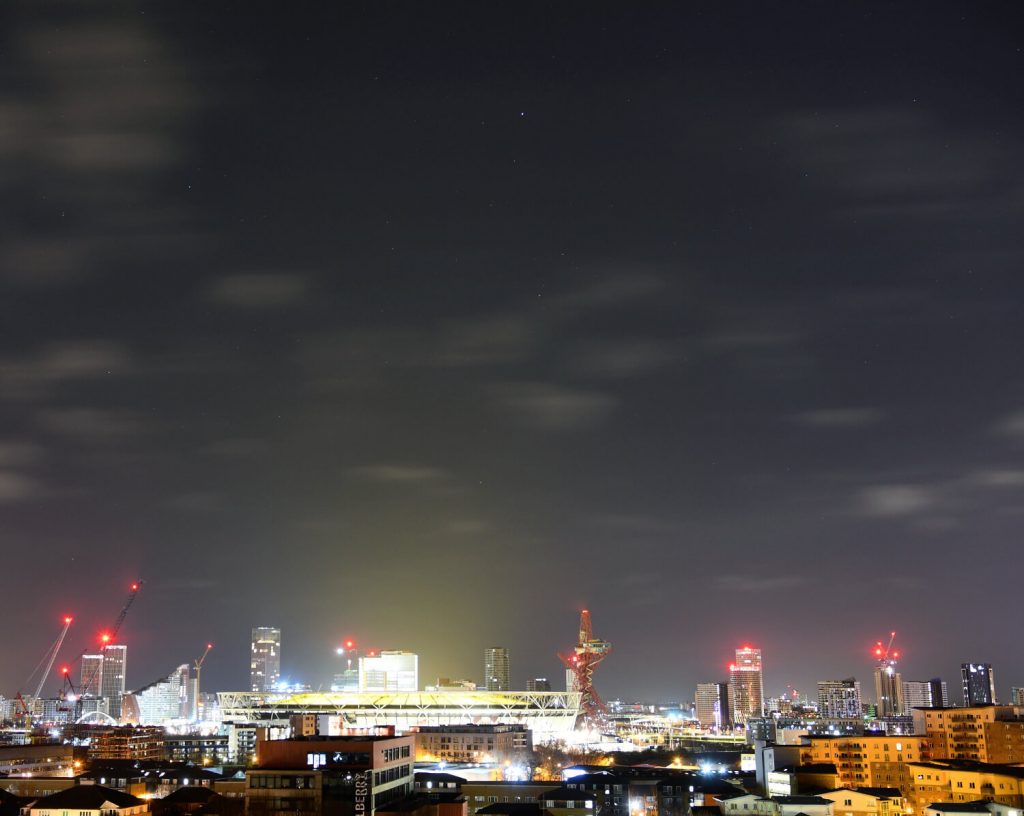
Looking towards the Queen Elizabeth Olympic Park in Stratford, with the star, Vega positioned in the top centre of the image. It’s one of the few things that’s visible with the naked eye here. The rest is killed off by the light pollution. The distance from my camera to the London Stadium was approximately 0.7 miles and was completed seven years ago. The distance to Vega (the fifth-brightest star in the night sky), in astronomical terms, is relatively close; ‘just’ 25 light years away. But that still means that the light that hits your eyes from this star today is 25 years old, long before the Olympic bid was even planned! Oh, and for reference, 25 light years in miles is somewhere in the region of 14700000000000000. I don’t think even the District Line goes that far out!
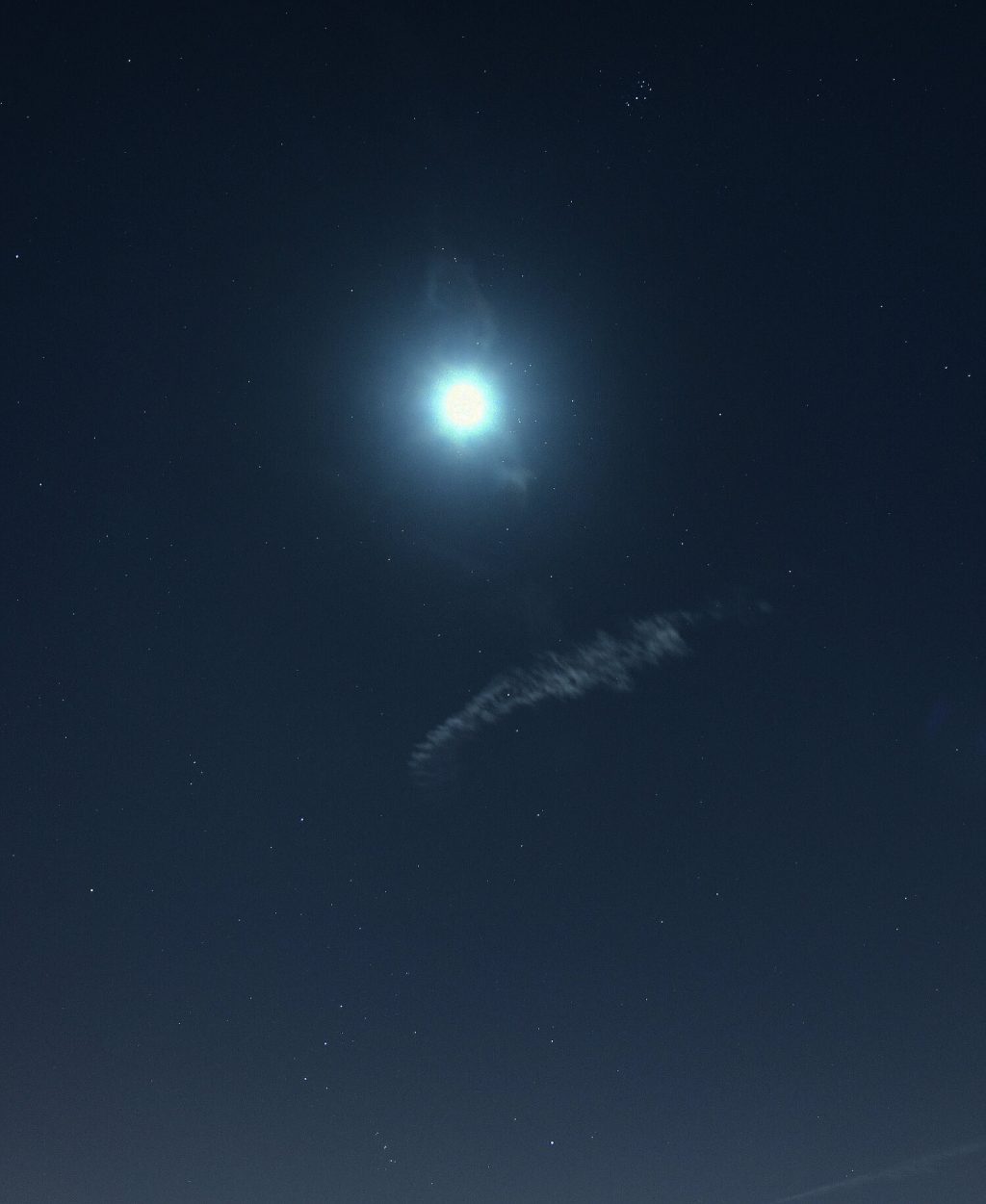
There’s not that much you can see in the night sky from London, due to the light pollution, so you have to challenge yourself I think. On a rare clear night in January, the atmosphere (for London!) was incredibly clear. Even with a near full moon, I was able to get this single shot of the Pleiades and Belt of Orion, either side of the moon. I love the look of the Pleiades – a star cluster, also known as the Seven Sisters. It’s usually high up in the sky though, so take a few moments to let your eyes adjust and see if you can spot it!
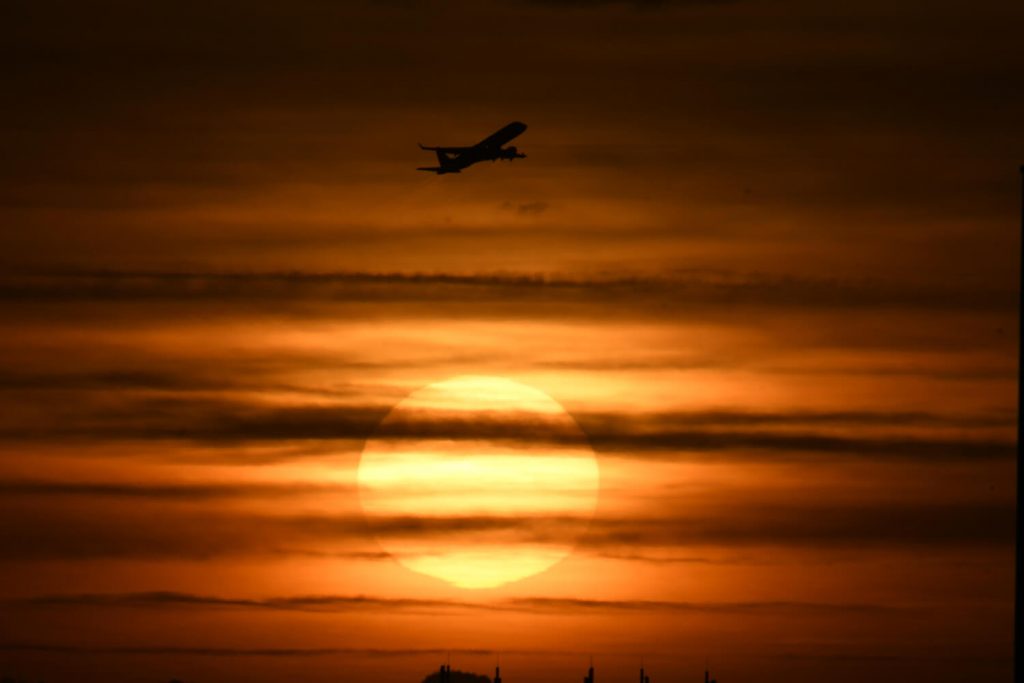
Of course, we shouldn’t forget about our own star and planet. We don’t have another one to go to if we ruin ours!
Enjoyed this photo essay? Have a look at Phil Verney’s photos of the Orbit and Queen Elizabeth Olympic Park and at instagram.com/philverney

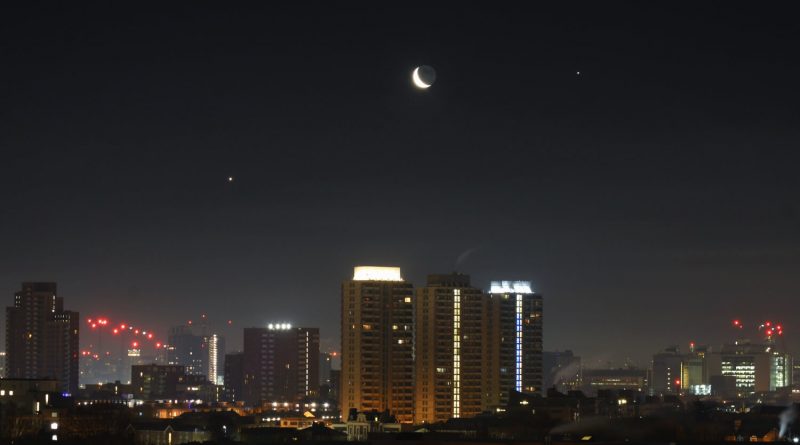
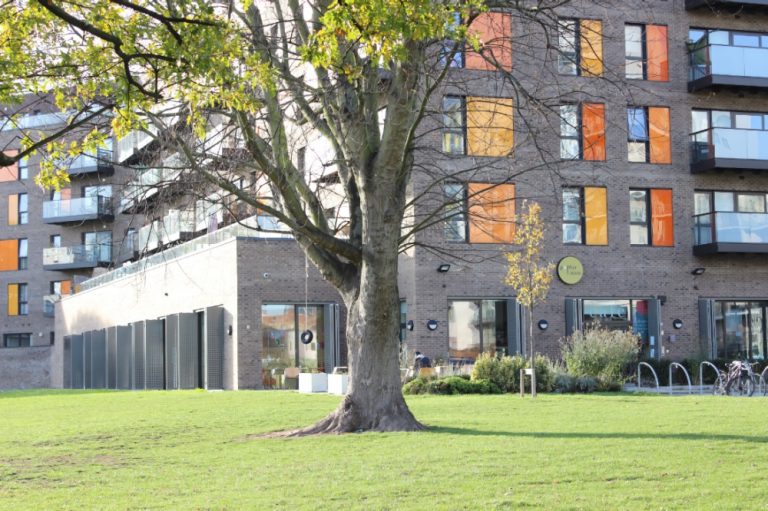


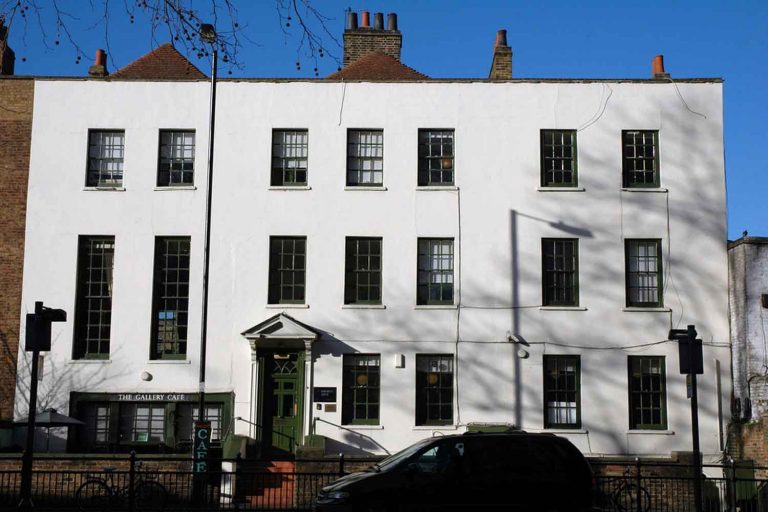



Breathtaking photos, Phil. Thanks so much for sharing them with us. Xxx
Thank you so much, Claire. I’m very glad you enjoyed them 🙂